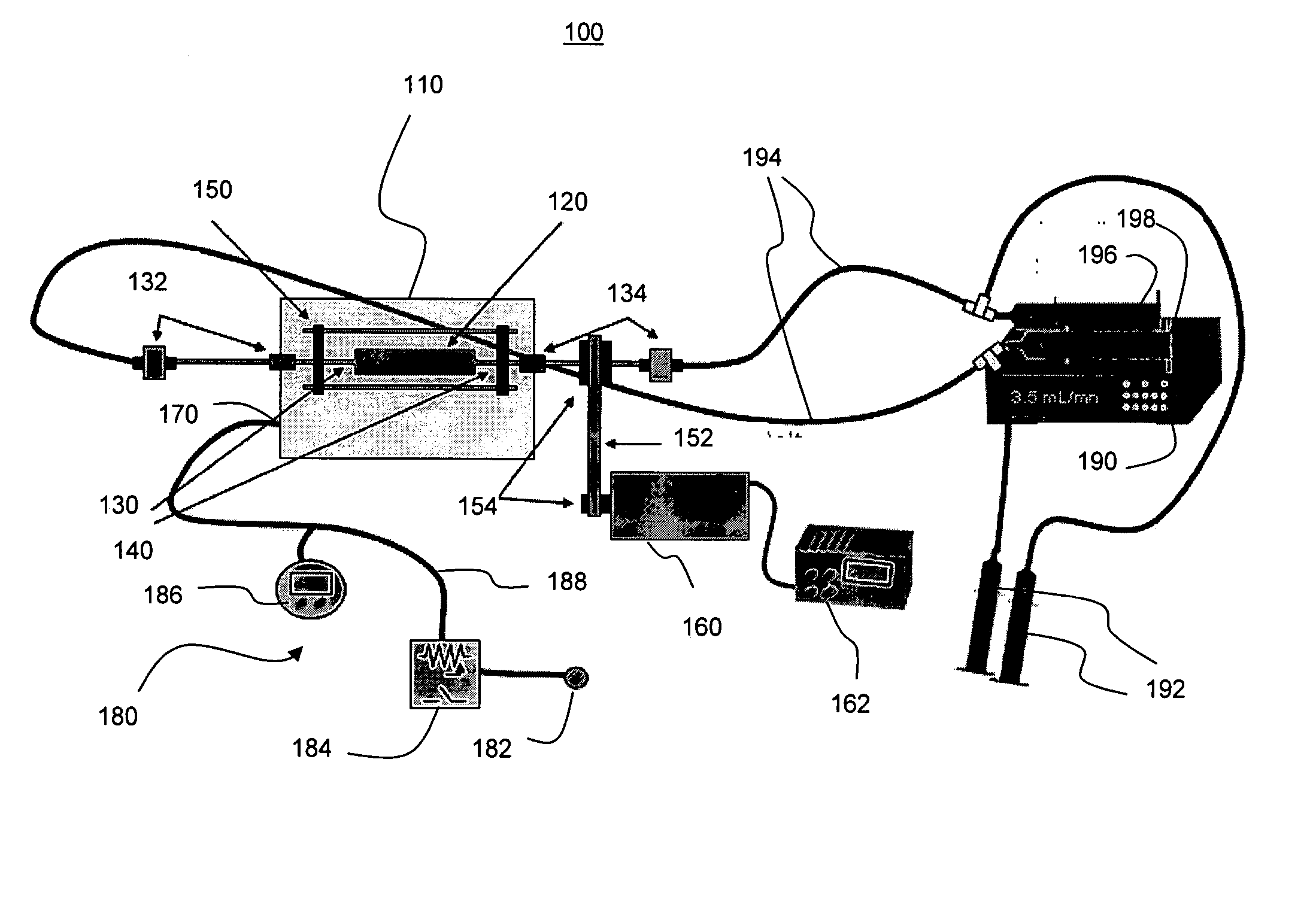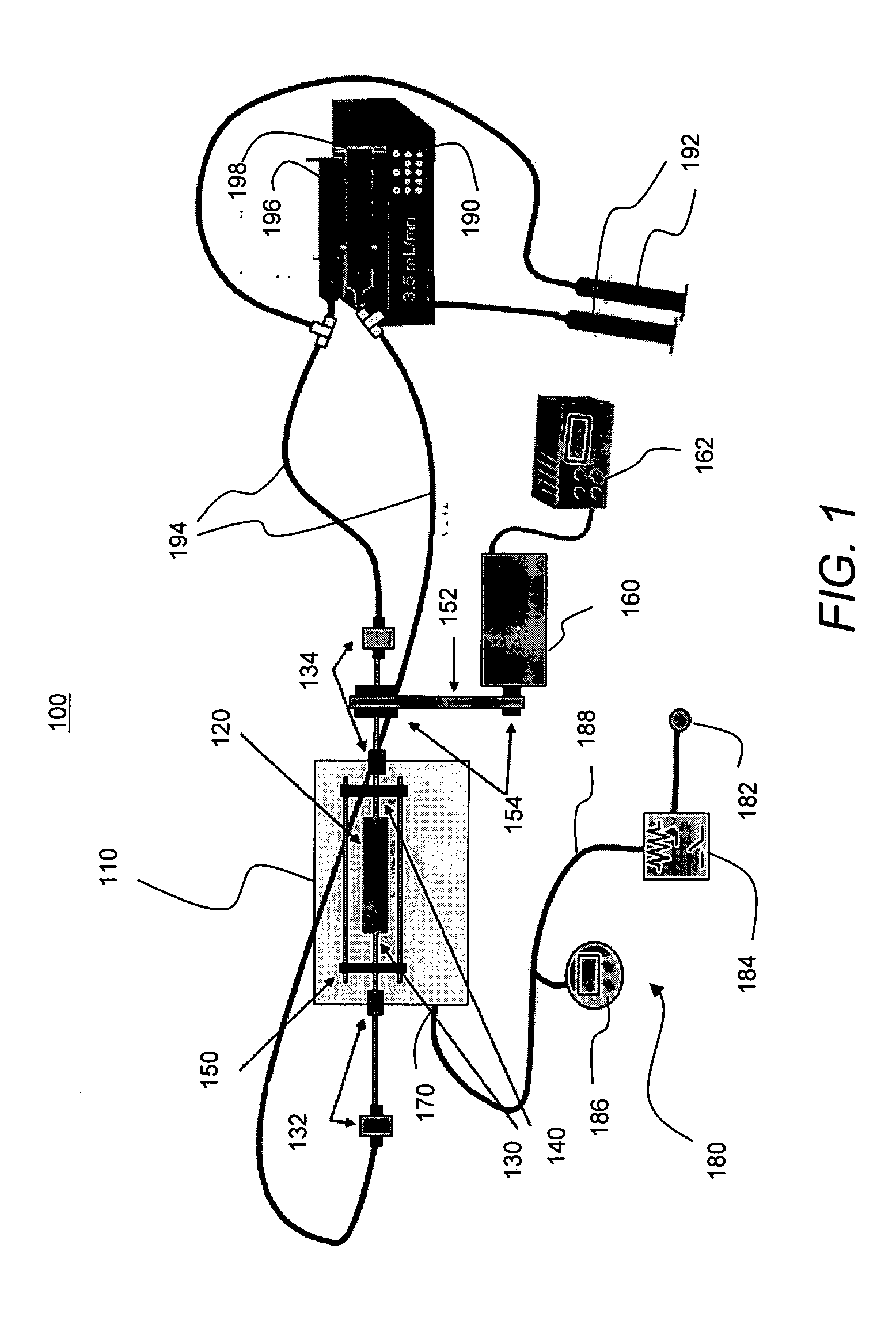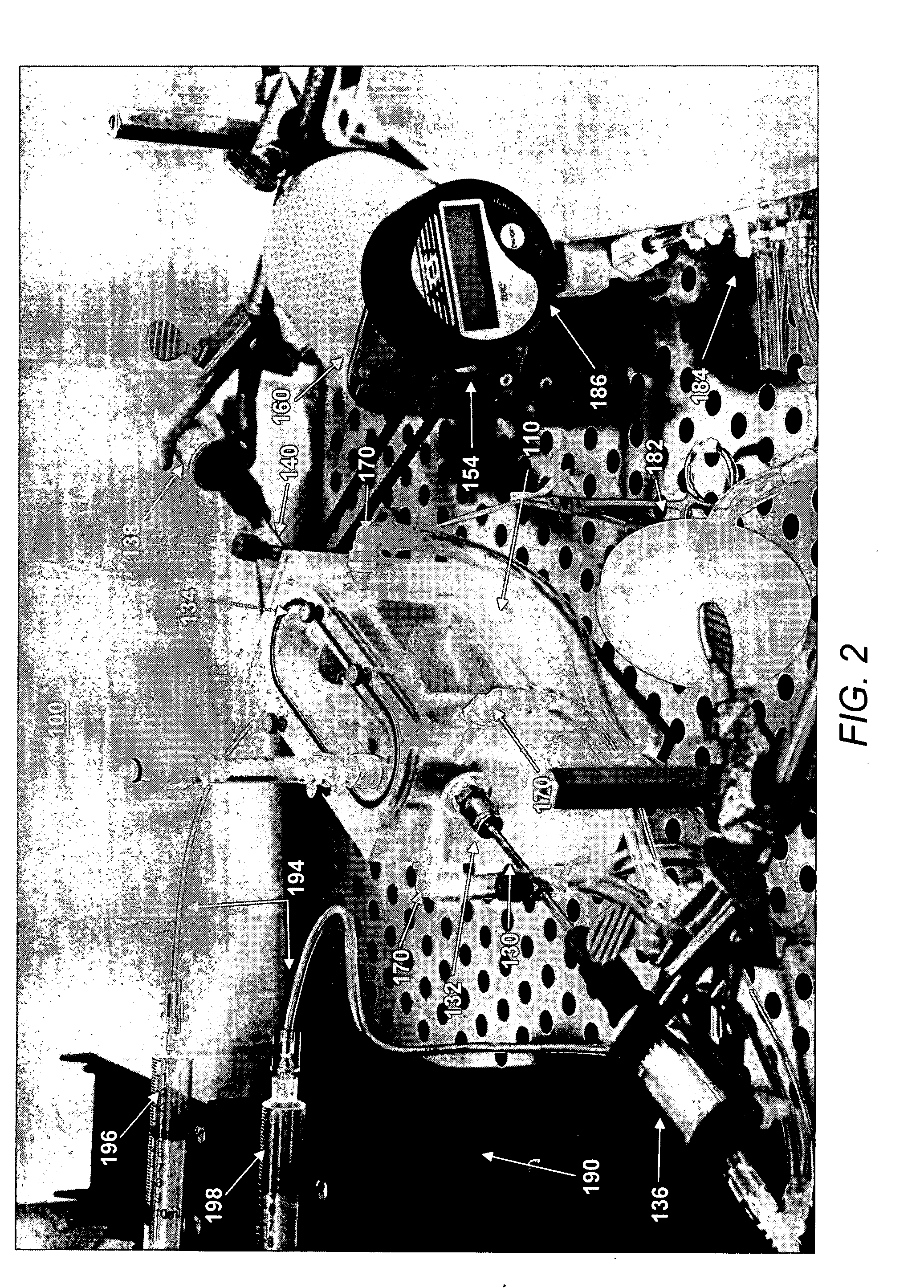Vacuum rotational seeding and loading device and method for same
a technology of rotating seeding and loading device, which is applied in the direction of colloidal chemistry, blood vessels, coatings, etc., can solve the problems of affecting the passive incorporation of cells throughout the thickness of the material, affecting the use of the seeding device, and affecting the efficiency of the material, so as to achieve rapid and spatially uniform cell distribution, improve patency rate, and improve the effect of time and efficiency
- Summary
- Abstract
- Description
- Claims
- Application Information
AI Technical Summary
Benefits of technology
Problems solved by technology
Method used
Image
Examples
examples
Bulk Seeding Experiments
[0055] Qualitative evaluation of the seeding was performed by seeding two 2 cm TIPS tubular scaffolds with 10.106 BMPC suspended in 10 mL of culture media (flow rate=3.4 mL / min, rotation speed=120 rpm, vacuum=−127 mmHg). Nuclear and cytoskeletal stains were visualized by epifluorescent microscopy of cross sections taken after two hours of static culture. Quantitative evaluation was performed by calculating the seeding efficiency of seeded scaffolds and also via two specifically designed experiments. The seeding efficiency (percent of the total number of cells incorporated) was calculated by determining the cell count in the seeding solution before and after seeding using a hemocytometer.
[0056] The first designated experiment for quantitative evaluation of the seeding performances involved six 2 cm long TIPS tubular scaffolds seeded with 15·106 MDSC. The cells were suspended in 20 mL of culture media and infused to the scaffold under identical conditions (f...
PUM
 Login to View More
Login to View More Abstract
Description
Claims
Application Information
 Login to View More
Login to View More - R&D
- Intellectual Property
- Life Sciences
- Materials
- Tech Scout
- Unparalleled Data Quality
- Higher Quality Content
- 60% Fewer Hallucinations
Browse by: Latest US Patents, China's latest patents, Technical Efficacy Thesaurus, Application Domain, Technology Topic, Popular Technical Reports.
© 2025 PatSnap. All rights reserved.Legal|Privacy policy|Modern Slavery Act Transparency Statement|Sitemap|About US| Contact US: help@patsnap.com



